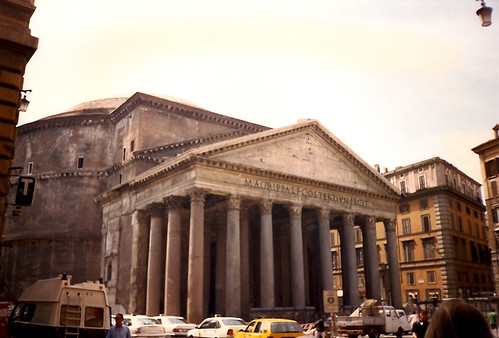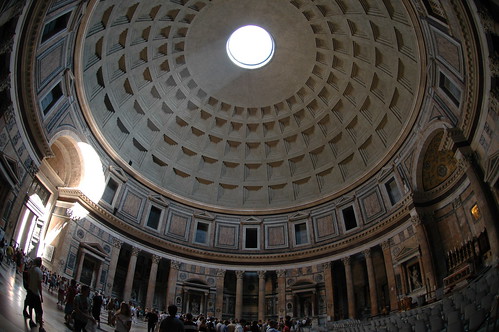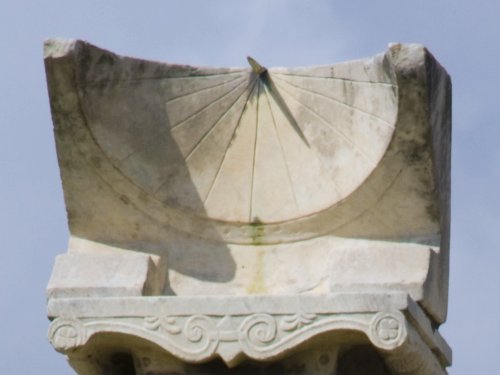If you want to be cruel about some early histories of astronomy you could say that the whole exercise seemed to be about giving ancient cultures marks. Labelling some as advanced because they could predict lunar eclipses and others as primitive, because no-one in their society could get worked up about a temporary dimming of the moon. It would be unfair, but not that unfair. More recently historians have been looking at how astronomy was used and thinking about what it says about society. Robert Hannah's been at the forefront of this, looking at how people used astronomy for social purposes. His previous book Greek and Roman Calendars combined a good introduction to basic astronomy with an explanation of why it matters.
Time in Antiquity takes this theme further. You get more discussion of the connection between the calendar and politics in the ancient world. You also get more of a discussion of the time of day too, and integrated with this is an examination of the physical evidence of time, mainly sundials, and how these fit into the ancient world. Which brings us to the Pantheon.
This is the final chapter of the book, and he's open from the start that it is speculative. Quite often that's a polite way of saying insane, but in this case what Hannah is doing is taking these various strands such as calendars, hours and sundials and showing how they're not isolated topics but entwined with each other and with the social world of the ancients. So what exactly does he say?
He notes that at noon when the Sun is at the equinox, a grille above the main door is in direct sunlight. The light passes through the grille and lights up a courtyard, which would otherwise be in shadow. He thinks it's deliberate because the domed roof of the Pantheon is like domed sundials known from other ancient sites. However he is not arguing that the Pantheon was a massive sundial, instead he says it's like a meridian line. At this point it's clear he's arguing something a lot more sophisticated than the Pantheon was a giant clock, so it would be useful to know exactly what the Pantheon is.

The Pantheon viewed from the northeast.
The Pantheon is the greatest building surviving from antiquity. I would rate it higher than the Parthenon. The one we see today was built by Hadrian in the 120s AD. The inscription above the entrance reads:
M·AGRIPPA·L·F·COS·TERTIUM·FECIT
Which credits Marcus Agrippa, Augustus's top general, with building the temple in his third consulship. This would have been 27BC, the year the Senate gave Octavian the title Augustus. There's also evidence which suggests the temple was rebuilt by Domitian in the second half of the first century AD. I wouldn't want to hazard a guess as to how much the design changed during the rebuilds.
When you get inside, the space takes your breath away. You could fit a ball 43 metres (140 feet) in diameter inside the Pantheon, if you could fit it through the small doorway to get in. The roof of the Pantheon is hemispherical, with a hole at the top - the oculus - which lets in light. The bottom half is a cylinder 43 metres in diameter, with the front door at the north. The name Pantheon suggests it was a temple to all gods, but we don't see any of that inside. It's been stripped and gutted by the Christians who have been using it as a church, but even as a shell it is stunning.
The light inside comes from the oculus at the top of the roof. At local noon, the Sun is always directly to the south, so the direct sunlight is always in the northern half of the temple. The shape of the oculus gives the impression of a spotlight being cast onto the interior of the Pantheon. The time of year will mean the this spotlight will be higher up the inside in winter, when the sun is low in the sky and lower in the summer when the Sun is much closer to being overhead. At some point between the two extremes the spotlight will be high enough to pass through the grill, but not so high to pass over it. You can't tell the time of day with this, but you could tell the time of year.

The spotlight on the doorway, September 7. Photo (cc) John Morton.
This ties in with a misunderstood Augustan monument. Most archaeologists believe that Augustus set up a massive sundial in the Campus Martius which cast a shadow over the Ara Pacis on Augustus's birthday. From this we can conclude that most archaeologists don't have much interest in physics. The gnomon was simply too far away from the Ara Pacis to cast a shadow anywhere near it. There's also no archaeological evidence of a sundial. Instead what there is is evidence of a meridian line. If you observe where the shadow of the top of the gnomon crosses the line at local noon, you can know what day of the year it is. Recent work by Peter Heslin recently published an article which must have been at least the third debunking of the sundial idea, but did point out that if you're trying to paint your rule as being part of the cosmic order, as Augustus did, then publicly fixing the calendar is a very good piece of propaganda. In a similar way standing in the courtyard of the Pantheon on the equinox and getting lit up by the Sun, might also be an early use of SFX in political presentation.
But is the Pantheon comparable to the Campus Martius meridian line? The meridian line in Campus Martius had a big sticky up gnomon and the Pantheon clearly doesn't. This is where Hannah's work on sundials matter. Ancient sundials weren't like the ones you usually see today with a vertical gnomon and a flat dial. Ancient sundials usually worked much more sensibly.

A sundial at Pompeii. Photo (cc) Sam Galison.
The lines on flat sundials are difficult to calculate because you're translating the movement of something which appears to be travelling across a spherical surface onto a flat plane. It's a bit like the distortion problem you get when you try and plot the world onto a flat atlas. The Greeks and Romans completely bypassed this problem by projecting the shadow of a gnomon onto a curved surface. This would be a hemispherical bowl, but in reality you don't the whole bowl, just the part where the shadow tip will cross. You can cut away the rest to stop it filling up with rainwater, and as you can see from the Roman sundial above - that's what they did. With a spherical surface it becomes very easy to divide each day into 12 hours by carving straight lines. Hannah has also found rarer instances of roofed sundials, with the gnomon being replaced by a point of light.
So looking at how Romans used sundials and lines, it seems marking the days of the year was ok on a flat surface, but if you were doing something which involved a specific time of day, you'd expect to read a curved surface. It would seem that Hannah's combination of day of the year, and noon event makes his explanation plausible. Further, he's found historical evidence of Nero having something similar in his palace in the middle of the first century AD.
The other problem is political. Hannah says that the Emperors would have wanted to be associated with the equinox because it was associated with stability. However, Augustus was also interested with comparing himself with Romulus. Indeed, for a while he considered taking the title Romulus rather than Augustus. That's relevant because if you listen to Giulio Magli's talk via this link (sorry, Windows only), you'll here another idea about the Pantheon - that it was built so the sun lit up the entrance on the anniversary of Rome's foundation, April 21.
We can check this. Scroll back up to the photo of the Pantheon and you'll see that the spotlight passed over the door rather than the grille on September 7. Because we know the date and the time we can look up the location of the Sun. On September 7, 2006, it was at around +6º declination. All we need to do is open up a planetarium program, spin back to 27BC and find out what day in the Spring the Sun was at +6º. The answer is...
Which credits Marcus Agrippa, Augustus's top general, with building the temple in his third consulship. This would have been 27BC, the year the Senate gave Octavian the title Augustus. There's also evidence which suggests the temple was rebuilt by Domitian in the second half of the first century AD. I wouldn't want to hazard a guess as to how much the design changed during the rebuilds.
When you get inside, the space takes your breath away. You could fit a ball 43 metres (140 feet) in diameter inside the Pantheon, if you could fit it through the small doorway to get in. The roof of the Pantheon is hemispherical, with a hole at the top - the oculus - which lets in light. The bottom half is a cylinder 43 metres in diameter, with the front door at the north. The name Pantheon suggests it was a temple to all gods, but we don't see any of that inside. It's been stripped and gutted by the Christians who have been using it as a church, but even as a shell it is stunning.
The light inside comes from the oculus at the top of the roof. At local noon, the Sun is always directly to the south, so the direct sunlight is always in the northern half of the temple. The shape of the oculus gives the impression of a spotlight being cast onto the interior of the Pantheon. The time of year will mean the this spotlight will be higher up the inside in winter, when the sun is low in the sky and lower in the summer when the Sun is much closer to being overhead. At some point between the two extremes the spotlight will be high enough to pass through the grill, but not so high to pass over it. You can't tell the time of day with this, but you could tell the time of year.

The spotlight on the doorway, September 7. Photo (cc) John Morton.
This ties in with a misunderstood Augustan monument. Most archaeologists believe that Augustus set up a massive sundial in the Campus Martius which cast a shadow over the Ara Pacis on Augustus's birthday. From this we can conclude that most archaeologists don't have much interest in physics. The gnomon was simply too far away from the Ara Pacis to cast a shadow anywhere near it. There's also no archaeological evidence of a sundial. Instead what there is is evidence of a meridian line. If you observe where the shadow of the top of the gnomon crosses the line at local noon, you can know what day of the year it is. Recent work by Peter Heslin recently published an article which must have been at least the third debunking of the sundial idea, but did point out that if you're trying to paint your rule as being part of the cosmic order, as Augustus did, then publicly fixing the calendar is a very good piece of propaganda. In a similar way standing in the courtyard of the Pantheon on the equinox and getting lit up by the Sun, might also be an early use of SFX in political presentation.
But is the Pantheon comparable to the Campus Martius meridian line? The meridian line in Campus Martius had a big sticky up gnomon and the Pantheon clearly doesn't. This is where Hannah's work on sundials matter. Ancient sundials weren't like the ones you usually see today with a vertical gnomon and a flat dial. Ancient sundials usually worked much more sensibly.

A sundial at Pompeii. Photo (cc) Sam Galison.
The lines on flat sundials are difficult to calculate because you're translating the movement of something which appears to be travelling across a spherical surface onto a flat plane. It's a bit like the distortion problem you get when you try and plot the world onto a flat atlas. The Greeks and Romans completely bypassed this problem by projecting the shadow of a gnomon onto a curved surface. This would be a hemispherical bowl, but in reality you don't the whole bowl, just the part where the shadow tip will cross. You can cut away the rest to stop it filling up with rainwater, and as you can see from the Roman sundial above - that's what they did. With a spherical surface it becomes very easy to divide each day into 12 hours by carving straight lines. Hannah has also found rarer instances of roofed sundials, with the gnomon being replaced by a point of light.
So looking at how Romans used sundials and lines, it seems marking the days of the year was ok on a flat surface, but if you were doing something which involved a specific time of day, you'd expect to read a curved surface. It would seem that Hannah's combination of day of the year, and noon event makes his explanation plausible. Further, he's found historical evidence of Nero having something similar in his palace in the middle of the first century AD.
The other problem is political. Hannah says that the Emperors would have wanted to be associated with the equinox because it was associated with stability. However, Augustus was also interested with comparing himself with Romulus. Indeed, for a while he considered taking the title Romulus rather than Augustus. That's relevant because if you listen to Giulio Magli's talk via this link (sorry, Windows only), you'll here another idea about the Pantheon - that it was built so the sun lit up the entrance on the anniversary of Rome's foundation, April 21.
We can check this. Scroll back up to the photo of the Pantheon and you'll see that the spotlight passed over the door rather than the grille on September 7. Because we know the date and the time we can look up the location of the Sun. On September 7, 2006, it was at around +6º declination. All we need to do is open up a planetarium program, spin back to 27BC and find out what day in the Spring the Sun was at +6º. The answer is...
April 7
By April 21 it's travelled up to +11º. It's not just Rome's birthday which might have been important to Augustus, there is also his own. Augustus's birthday was on September 23, which is fairly close to the equinox date for 27 BC (September 25). If Agrippa was marking Augustus's birthday, there's no way we'd be able to distinguish that from the equinox purely from the architecture. Factor in the rebuilds and it's possible that the key alignment was changed slightly during the building.
It's the ambiguity in some of the architectural and historical evidence which means that I'm not certain that the Pantheon was intentionally built to mark the equinoxes. At the same time the combination of different types of evidence that Hannah uses which point towards the potential use of the Pantheon means that it's an idea which deserves to be taken seriously. Even if the Pantheon was not used as Hannah describes, the rest of his book makes a strong case that the use of astronomy in society hasn't received the critical attention that it should. When I start looking in more detail at Roman astronomy, I'll have to keep Hannah's observations on the equinox near the front of my mind.
By April 21 it's travelled up to +11º. It's not just Rome's birthday which might have been important to Augustus, there is also his own. Augustus's birthday was on September 23, which is fairly close to the equinox date for 27 BC (September 25). If Agrippa was marking Augustus's birthday, there's no way we'd be able to distinguish that from the equinox purely from the architecture. Factor in the rebuilds and it's possible that the key alignment was changed slightly during the building.
It's the ambiguity in some of the architectural and historical evidence which means that I'm not certain that the Pantheon was intentionally built to mark the equinoxes. At the same time the combination of different types of evidence that Hannah uses which point towards the potential use of the Pantheon means that it's an idea which deserves to be taken seriously. Even if the Pantheon was not used as Hannah describes, the rest of his book makes a strong case that the use of astronomy in society hasn't received the critical attention that it should. When I start looking in more detail at Roman astronomy, I'll have to keep Hannah's observations on the equinox near the front of my mind.





Comments